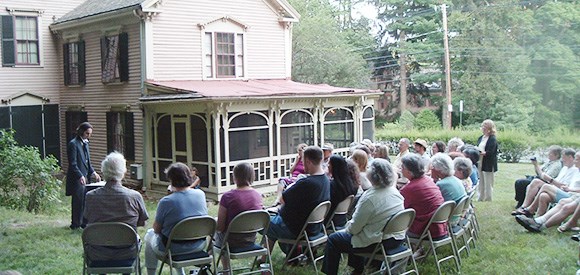Last updated: June 18, 2025
Article
Audits...Inspections...Compliance Checks...A Good Thing!

Fire Prevention Week Campaign
During the week of October 5 – 11, 2014, the National Fire Protection Association (NFPA) is helping build awareness of the need for fire prevention as part of the annual Fire Prevention Week campaign. Each year, Fire Prevention Week helps us focus on how we can keep our families and friends safe from fire. And, as employees and partners of the National Park Service, we are all one big family. The NPS Structural Fire program focuses on protecting our employees, visitors, park partners, and cultural resources from the effects of fire.
For the past few years, NPS Structural Fire has been using an audit process known as A123 to gauge how we are doing. A123 audits are designed to ensure that we, as a bureau, have the proper controls in place so that our employees follow laws and policies. In the case of structural fire, our controls are spelled out in Reference Manual 58, Structural Fire Management. The structure fire A123 audit was designed to see if these controls were being used effectively.
As employees of the federal government, you have likely been audited, inspected, and compliance-checked to death, if not on the receiving end, then on the giving end. Most of us dread having to go through these audits, no matter which end we are on. But why?
Perhaps it is the fear of people finding out we are not doing a good job--of airing our dirty laundry, figuratively speaking. So, what if we were to adopt a new attitude about audits, inspections, and compliance checks? What if we looked at them as opportunities to tell our story--to show all the good things we are doing and all the good things we could do with more support, more money, and more emphasis provided by leadership on our programs? What if we looked at these checks as opportunities to inform our leadership of serious problems they need to know about? What if we changed our perspective to see audits, inspections, and compliance checks as a good thing?
“A good thing” is exactly how the NPS Structural Fire Program viewed their task of completing an A123 audit in 2011 and again in 2012. It was a chance to inform leadership that there was a serious problem, but that there was still time to act. It was also a chance to partner with other NPS programs to increase the effectiveness of our programs.
With “It’s a good thing” as our motto, we set out to create an audit that clearly identified unacceptable risks to the NPS and the effectiveness of our internal controls. We did this in a way that was as uncomplicated as possible to the parks, and that also provided concrete proof of the data we were receiving. As expected, the results showed that there was a high degree of risk and that our internal controls were not effective in reducing them. Our next task was to package the results and educate our leadership on the risks indicated by our audit. The result has been phenomenal! With the support of leadership and with leadership’s focus on our program, we have created positive relationships with other program areas that directly affect our ability to protect our family, friends, partners, and visitors from fire.
As an example of this, the Park Facilities Management Division (PFMD) and the Branch of NPS Structural Fire have formed a work group to address one of the biggest problems identified by the audit: the lack of annual inspection and testing of our fire and life safety systems. In a little over one year, this group has reprogrammed the FMSS templates for building files so that fire protection systems are easy to find. They have also partially funded regional efforts to hire contractors to ensure that those templates are accurately populated. With this inventory of our fire protection systems well on its way, the group is now focusing its efforts on contracting tools and funding for the annual inspection and testing of these systems.
Another place where significant risk exists is with our concessions-operated buildings. The A123 audit has also brought the Commercial Services Program and Branch of Structural Fire together. These two groups are beginning to identify methods for reducing these risks and to clarify roles as they pertain to NPS and concessionaire responsibilities in providing buildings and operations that are safe from fire. We are optimistic that these partnerships will soon show positive results and we can begin to publish our outcomes and educate senior management, as well as regional and park staff, to help ensure that concessions-managed buildings are maintained and operated safely.
Another positive outcome of the A123 audit has been the aligning of national, regional, and park priorities. Now that the results are in and the corrective actions are published and backed by senior leadership, we have a cohesive approach to resolving our risks. Regional and park structural fire coordinators and facilities managers now have a much better understanding of structural fire risks and the policies and internal controls designed to mitigate them. Now that roles and responsibilities and are better identified, both groups are beginning to take effective actions.
For the NPS Structural Fire Program, an audit was a good thing. By taking a positive approach to the audit, we have created partnerships that have exponentially increased our ability to provide a structural fire program that can focus on protecting our NPS family from fire and preserving our cultural resources and infrastructure.
